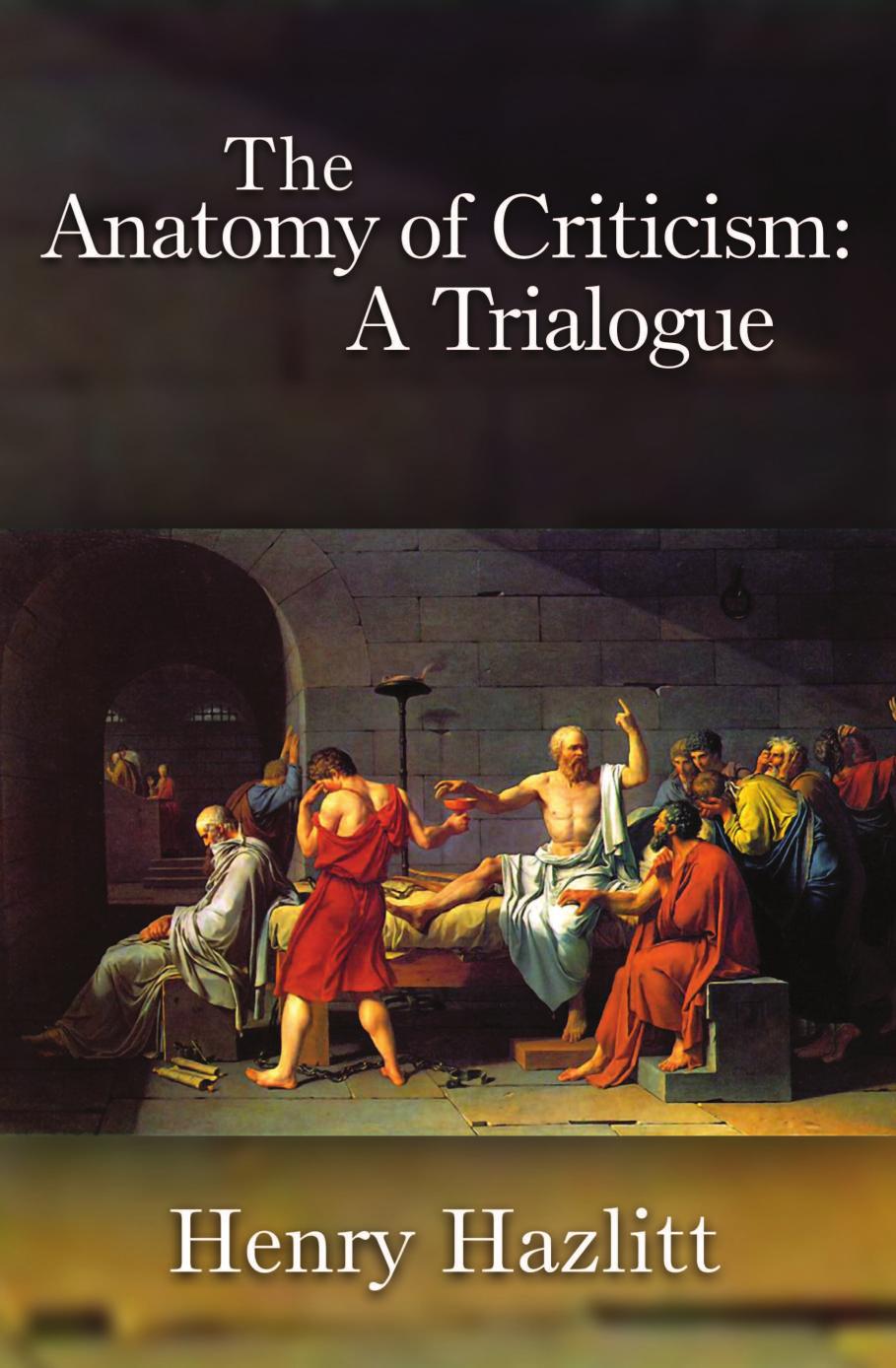
The Anatomy of Criticism (1933) PDF
Preview The Anatomy of Criticism (1933)
When Henry Hazlitt published this exceedingly rare book, he was finishing up a three-year position at The Nation as literary critic, and preparing to accept the position as H.L. Mencken's successor at American Mercury.
He was struggling with integrating his two main interests: literary criticism and economics. In economics, value is subjective, whereas the key goal in literary criticism is the discovery of something approximating objective value.
The text of this book reflects that struggle in the form of a trialogue. Hazlitt has his characters debate the question of literary value, and pushes forward the proposition that the value of literature is discerned and revealed through the operation of the "social mind."
So he ends up rejecting relativism while avoiding mistakes in economic theory. A fascinating study, brilliantly conceived and rendered by a master.
As an extra bonus here, Hazlitt offers a postscript on the rise of Marxism in literary criticism. He shows how preposterous it is for Marxism to reject the main corpus of Western litertaure as hopelessly bourgeois, even while Marx himself read all the great works in his leisure. This is a highly significant essay becuase it was probably the first attack on Marxist literary deconstructionism ever written!
Henry Hazlitt- Henry Hazlitt (1894–1993) was a well-known journalist who wrote on economic affairs for the New York Times, the Wall Street Journal, and Newsweek, among many other publications. He is perhaps best known as the author of the classic, Economics in One Lesson (1946).
Jake Le Master writes this review in Amazon - Henry Hazlitt was not yet a Misesian at this point in his life (1933). In writing Anatomy of Criticism, he seems to have no axe to grind and no academic ideology to defend. He has read to a very great extent, with passion and decorum. If not abstractly, he has ruminated superior and more compellingly than those whose yearn for composing unduly often furnishes too many books about literature, either tedious or cursory, or both. The issues of the dialogues range from "criticism's right to exist" and "the critic's function" to such cordially parlayed topics as "objectivity or subjectivity," "tradition and rebellion," "standards," and "sincerity, style, and pure art." Insofar as he at the time had one, Hazlitt appears to advance towards the elucidation of his own conjecture in the chapter on "The Social Mind." The notions have as a root Charles Cooley's Social Organization; the implementation to literature is Hazlitt's, though essentially, he may have been close to the point of view at the time of rhetorician I.A. Richards. Values are the crucial thing both for literature and for life: "Values are determined by the social mind. The value of a good is not inherent in that good; it is not independent of the mind and desires of men. But it is in large degree independent of the mind and desires of any particular man" (pp. 103-104). The chapter designated Vivisecting Signor Croce is a very clever excoriating of the Italian promulgator of analytical uncertainty.
Hazlitt has penned an invaluable and controversial book. Lavish in quotation, it is nearly an compendium of critical theory. Much gratitude is owed to the Mises Institute for bringing it back to print. The keen student of English and criticism will purchase it, read it, and then read it again. Such rereading won't founder in expanding and vitalizing one's convictions of literature.
